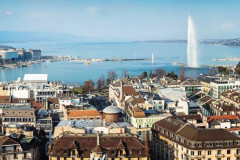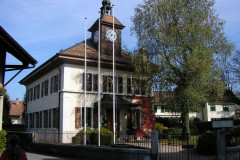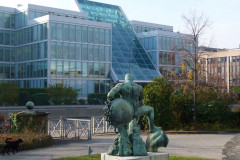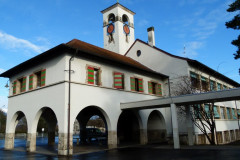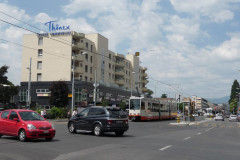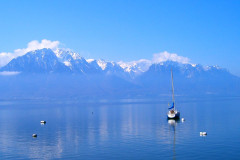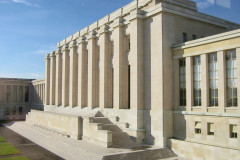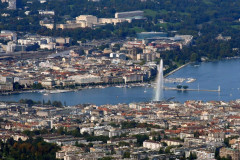Canton of Geneva
Description
The Republic and Canton of Geneva is the French-speaking westernmost canton or state of Switzerland, surrounded on almost all sides by France. As is the case in several other Swiss cantons (e.g. Ticino, Neuchâtel, and Jura), this canton is referred to as a republic within the Swiss Confederation.
The canton of Geneva is located in the southwestern corner of Switzerland; and is considered one of the most cosmopolitan areas of the country. As a center of the Calvinist Reformation, the city of Geneva has had a great influence on the canton, which essentially consists of the city and its hinterlands.
History
Further information: History of GenevaGeneva was a Prince-Bishopric of the Holy Roman Empire from 1154, but from 1290, secular authority over the citizens was divided from the bishop's authority, at first only lower jurisdiction, the office of vidame given to François de Candie in 1314, but from 1387 the bishops granted the citizens of Geneva full communal self-government. As from 1416, the Dukes of Savoy attempted to annex the city, both by claiming secular authority and by installing members of the Savoy dynasty as bishops, the city sought assistance in allying itself with the Old Swiss Confederacy. The Republic of Geneva was proclaimed in 1541, under John Calvin, and given a constitution (Édits civils) in 1543. The Republic of Geneva reinforced its alliance to the Protestant cantons of the Swiss Confederacy, becoming an "everlasting ally" in 1584.
The French Revolution reached Geneva in 1792, and in February 1794, the Republic gave itself a new, revolutionary constitution which proclaimed the equality of all citizens. After the death of Robespierre in July of the same year, there was a counter-revolution, which gained the upper hand by 1796. This prompted the French invasion of 1798, and the annexation of Geneva as part of the French département du Léman. Geneva finally joined the Swiss Confederation in 1815 as the 22nd canton, having been enlarged by French and Savoyard territories at the Vienna Congress (see Restoration and Regeneration).
Geography
The area of the canton of Geneva is 282 square km. The canton is surrounded on almost all sides by France and bordered by the Swiss canton of Vaud on northeast. The adjoining French départements are Ain (to the north) and Haute-Savoie (to the south and east). The current boundaries of the canton were established in 1815.
Transport
Most of the main roads in the canton of Geneva radiate from the capital city of Geneva. Of these main roads, a great number lead into France rather than any Swiss canton. The canton is served by an international airport at Cointrin (Geneva International Airport) which has one terminal only. There are many railway services including commuter, intercity regional, and international mostly originating from Geneve Cornavin Station in Geneva. The services are operated by the Swiss Federal Railways, SNCF (France's national rail), and Trenitalia. Since 1984 the French high-speed trains (TGV) come to Geneva. In 1964 the canton of Geneva was connected to the Swiss highway system, in 1970 to that of France.
Culture
Jeûne genevois is a public holiday specific to Geneva, celebrated on the Thursday following the first Sunday of September.

